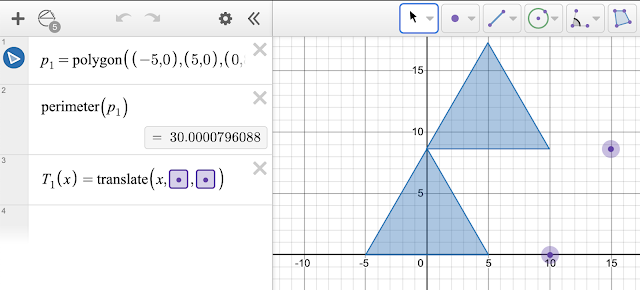Desmos regression tool

Demos graphing calculator on the web (desktop, laptop) includes a regression tool. The tool is not yet in the mobile app. To use the tool on a mobile device use the mobile browser to open: https://www.desmos.com/calculator The regression tool works with tables. The tool is an icon at the upper left side of the table. The tool opens as a linear regression. Other regression options are available. To the right of the equation is an icon that copies the equation out to a new line. Editing that to f(x) notation results in a function that accepts inputs. Note that the above was done on mobile device using the mobile browser, not the Desmos app. The graph above was autoscaled using the autoscale on the table.








